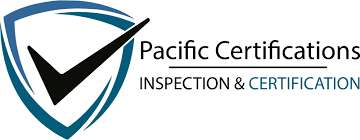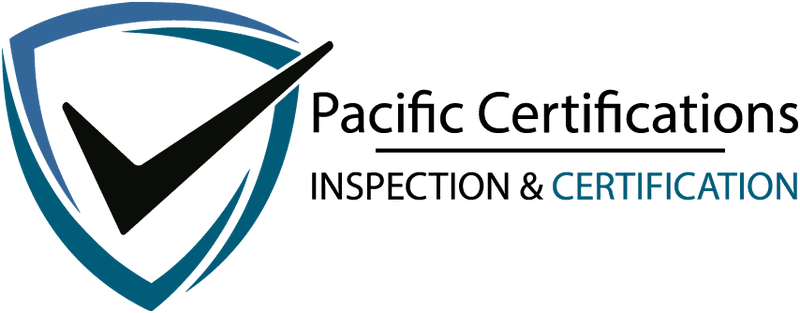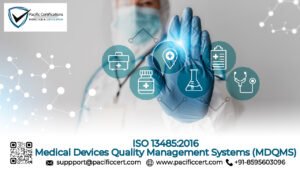What is ISO 14001:2015?

ISO 14001:2015 is the internationally recognized standard for Environmental Management Systems (EMS), published by the International Organization for Standardization (ISO). It helps organizations to manage their environmental responsibilities in a systematic way that contributes to sustainability. The standard also helps to reduce environmental impacts, comply with legal obligations and increase environmental performance. With increasing climate change concerns, stricter regulations, and consumer demand for eco-friendly businesses, ISO 14001 has become more relevant than ever.
ISO 14001:2015 follows the Annex SL structure, making it easily integrable with other ISO management standards such as ISO 9001 and ISO 45001.

If your organization is looking to get certified for ISO 14001:2015, contact us at support@pacificcert.com, we have been helping companies globally for the past 10 years!
ISO 14001:2015 and the PDCA Cycle (Plan-Do-Check-Act)
The PDCA cycle is at the heart of ISO 14001:2015, guiding organizations in continually improving their Environmental Management System (EMS).

- Plan: Identify environmental aspects, legal requirements, risks, and set environmental objectives. Define the EMS scope and establish an environmental policy aligned with organizational goals.
- Do: Implement the EMS by assigning roles, providing training, managing operations, controlling environmental impacts, and maintaining documented procedures.
- Check: Monitor and measure environmental performance, conduct internal audits, evaluate compliance, and review results through management review.
- Act: Take corrective actions, address non-conformities, and implement improvements to enhance overall environmental performance.
This cycle helps organizations stay compliant, reduce environmental impacts, and improve sustainability over time.
Key Changes in ISO 14001:2015 (vs. 2004 Version)
- Risk-based thinking (proactive environmental risk management)
- Stronger leadership involvement (top management accountability)
- Lifecycle perspective (assessing environmental impact from raw materials to disposal)
- Alignment with other ISO standards (easier integration with ISO 9001, ISO 45001)
5 Key Elements of ISO 14001:2015
ISO 14001:2015 is structured to help organizations build a sustainable and compliant Environmental Management System (EMS). The standard focuses on identifying environmental risks and ensuring continual improvement. Below are the five key elements that form the foundation of ISO 14001:2015:
- Environmental Policy
Outlines the organization’s commitment to sustainability, legal compliance, and pollution prevention. Provides a framework for setting environmental objectives and guiding environmental performance. - Planning
Focuses on identifying environmental aspects, risks, and legal obligations. Helps organizations set measurable objectives and prepare for future environmental challenges. - Implementation and Operation
Covers roles, responsibilities, training, and operational controls. Ensures resources are in place and procedures are followed to manage significant environmental aspects. - Performance Evaluation
Involves monitoring, measurement, internal audits, and management reviews. Evaluates the effectiveness of the EMS and identifies areas for improvement. - Improvement
Requires corrective actions for non-conformities and continuous system enhancement. Drives long-term environmental performance and alignment with changing business needs.
Key Definitions
Essential terms used in ISO 14001:2015 that form the foundation of the environmental management framework are:
- Environmental Aspect: An element of an organization’s activities or products that interacts with the environment.
- Environmental Impact: Any change to the environment resulting from an organization’s activities.
- Compliance Obligation: Legal and other requirements that an organization must or chooses to comply with.
- Environmental Objective: A measurable goal set by the organization consistent with its environmental policy.
- Life Cycle Perspective: Considering environmental aspects from raw material acquisition to end-of-life disposal.
Clause-wise Structure of ISO 14001:2015
The standard is divided into 10 clauses based on the Annex SL framework, ensuring consistency with other ISO management standards.
Clause | Title | Purpose |
1 | Scope | Describes the intended outcomes and applicability of the EMS. |
2 | Normative References | Cites other ISO standards referenced in the document. |
3 | Terms and Definitions | Clarifies key terminology used throughout the standard. |
4 | Context of the Organization | Identifies internal and external factors affecting EMS implementation. |
5 | Leadership | Highlights the role of top management in EMS commitment and accountability. |
6 | Planning | Involves risk assessment, opportunities, objectives, and compliance obligations. |
7 | Support | Covers resources, competence, awareness, and communication. |
8 | Operation | Addresses operational planning and control, including emergency preparedness. |
9 | Performance Evaluation | Involves monitoring, measurement, analysis, and internal audits. |
10 | Improvement | Focuses on nonconformity, corrective actions, and continual improvement. |
Implementation Requirements
Organizations seeking ISO 14001:2015 certification must fulfil the following key implementation requirements:

- Define the EMS scope and environmental policy aligned with the organization’s mission.
- Identify environmental aspects and assess impacts across operations and life cycle stages.
- Determine and evaluate compliance obligations and integrate them into decision-making.
- Set measurable environmental objectives with defined performance indicators.
- Establish operational controls for significant aspects and legal requirements.
- Develop and test emergency preparedness and response procedures.
- Conduct regular internal audits and management reviews to evaluate EMS effectiveness.
- Ensure employee engagement and awareness across departments and levels.
- Drive continual improvement using data, corrective actions, and innovation.
If you are looking for ISO 14001:2015 certification process, get in touch with us at support@pacificcert.com.
Internal Audit Checklist ISO 14001
Steps for conducting internal audit according to ISO 14001:2015:
- Plan audit scope and schedule
- Review EMS documentation
- Conduct interviews and site observations
- Record findings and issue NCs
- Prepare audit report and corrective action plan
Documentation Required for ISO 14001:2015 Audit
The following documents and records are required for ISO 14001 compliance and audit readiness:
- Environmental policy and defined scope of the EMS
- Register of environmental aspects and impacts and their evaluations
- Compliance obligations register with legal and other requirements
- Environmental objectives, targets, and improvement programs
- Documented operational controls and SOPs
- Emergency response and testing records
- Internal audit schedules, reports, and follow-up actions
- Monitoring and performance measurement records
- Records of nonconformities and implemented corrective actions
Benefits of ISO 14001:2015 Certification
ISO 14001 certification offers a wide range of operational and environmental advantages:

- Improves environmental performance through structured management practices.
- Ensures legal compliance with applicable environmental laws and regulations.
- Reduces operational waste, energy consumption, and raw material use.
- Enhances brand reputation and builds trust with environmentally conscious stakeholders.
- Opens access to green markets and environmentally regulated industries.
- Minimizes environmental risks and liabilities through preventive measures.
- Facilitates integration with ISO 9001, ISO 45001, and other ISO systems.
- Boosts efficiency and competitiveness through sustainable innovation.
- Strengthens organizational resilience by preparing for environmental disruptions.
- Supports ESG reporting and corporate sustainability objectives.
ISO 14001:2015 is playing an important role in how companies around the world approach environmental responsibility. With rising concerns on climate change and increased pressure from governments, investors, and consumers, sustainability has become more than just a trend, it’s now a core part of how businesses operate. ISO 14001 provides a clear, internationally recognized framework that helps organizations to manage their environmental impact in a structured and effective way. As a result, adoption of the standard has expanded across industries, from manufacturing and energy to retail and service sectors.
Certification Process of ISO 14001:2015
ISO 14001 certification involves a structured process to establish and maintain an Environmental Management System (EMS) that complies with the standard’s requirements. The steps include:

- Initial Review: Assess current environmental practices and identify gaps.
- Planning: Define environmental objectives and processes.
- Implementation: Develop and implement the EMS.
- Internal Audit: Evaluate the EMS’s effectiveness internally.
- Management Review: Top management reviews the EMS performance.
- Certification Audit: An external auditor assesses compliance.
- Certification: Upon successful audit, certification is granted.
To get your certification process started, contact us at support@pacificcert.com today!
Certification Cost
The cost of ISO 14001:2015 certification depends on multiple organizational factors:
- Size and complexity of the organization and its processes
- Number of operational sites or facilities involved in the scope
- Current environmental compliance level and documentation maturity
- Scope of EMS implementation (full vs. partial organizational coverage)
- Time and resources needed for audit planning, execution, and reporting
To get a tailored quotation for ISO 14001:2015 certification, contact us at support@pacificcert.com.
Certification Timeline
ISO 14001:2015 certification process spans about 6 to 10 weeks, depending on organizational readiness.
Week | Stage | Details |
Week 1 | Application & Initial Review | Define EMS scope, conduct readiness review, and plan the audit. |
2–3 | Gap Analysis & Documentation Review | Identify nonconformities and align EMS documentation. |
4–5 | Implementation & Internal Audit | Finalize operational controls and conduct internal audits. |
6 | Stage 1 Audit | Review EMS documentation, compliance obligations, and controls. |
7–8 | Stage 2 Audit | Validate implementation across processes, departments, and sites. |
9–10 | Report Review & Certification | Resolve audit findings and issue ISO 14001 certificate. |
How Pacific Certifications Can Help?
Pacific Certifications, accredited by ABIS, offers impartial and accredited certification services for ISO 14001:2015.
- Conducts independent Stage 1 and Stage 2 audits based on ISO 17021-1 principles
- Verifies compliance of EMS documentation, policies, and records
- Issues globally recognized ISO 14001 certificates upon successful audit
- Performs integrated audits for ISO 9001, ISO 45001, and ISO 50001
- Provides annual surveillance and recertification audits for continual assurance
If you are looking for ISO 14001:2015 certification, contact us at support@pacificcert.com!
Why ISO 14001 Is Important in 2025?
In 2025, ISO 14001 is more critical than ever due to the growing global focus on climate change, environmental accountability and sustainable business practices. Governments and consumers are increasingly prioritizing organizations that actively reduce their environmental impact and align with international environmental goals.
With tightening regulations such as the European Green Deal, mandatory ESG disclosures, and stricter carbon reporting frameworks across the U.S., EU, and Asia, companies without a structured Environmental Management System (EMS) are at higher risk of non-compliance, fines, and reputational damage. ISO 14001 offers a standardized method for managing these obligations.
Moreover, in an era of supply chain scrutiny and green procurement, buyers and partners increasingly demand proof of sustainable practices, and ISO 14001 provides that credibility. It also contributes directly to ESG reporting, supports net-zero carbon goals, and enables resource efficiency, which is vital for controlling operational costs in a volatile economic environment.
ISO 14001 is a tool for risk mitigation, regulatory alignment, and long-term business sustainability, contact us today at support@pacificcert.com to get your company certified!
Training & Courses ISO 14001
At Pacific Certifications, we are accredited to provide ISO 14001 and various other ISO standard training programs:
- Internal Auditor Training: For employees conducting internal audits.
- Lead Auditor Training: For professionals leading certification audits.
- Lead Implementer Training: For those responsible for EMS deployment.
Online vs. In-Person Courses:
Online courses offer flexibility and cost-effectiveness, while in-person sessions provide hands-on experience and networking opportunities, we offer both online and classroom training services.
Auditors must complete recognized training and demonstrate competence through exams and practical assessments.
To know about our upcoming training sessions, contact us at support@pacificcert.com
FAQs on ISO 14001:2015
What is ISO 14001 2015 standard for?
ISO 14001 is the international standard that specifies requirements for an effective environmental management system (EMS). It provides a framework that an organization can follow, rather than establishing environmental performance requirements.
What are the main objectives of ISO 14001 2015?
What are six main clauses of ISO 14001:2015?
- Scope.
- Normative References.
- Terms and Definition.
- Context of the Organization.
- Leadership.
- Planning.
- Support.
- Operations.
What are the benefits of ISO 14001?
Key benefits include improved regulatory compliance, cost savings, enhanced reputation, reduced environmental risks, and increased operational efficiency.
What are the 5 elements of ISO 14001?
- Environmental policy;
- Planning;
- Implementation and Operation;
- Checking and Corrective Action.
- Management review.
Ready to get ISO 14001:2015 certified?
Contact Pacific Certifications to begin your certification journey today!
Suggested Certifications –
Read more: Pacific Blogs








